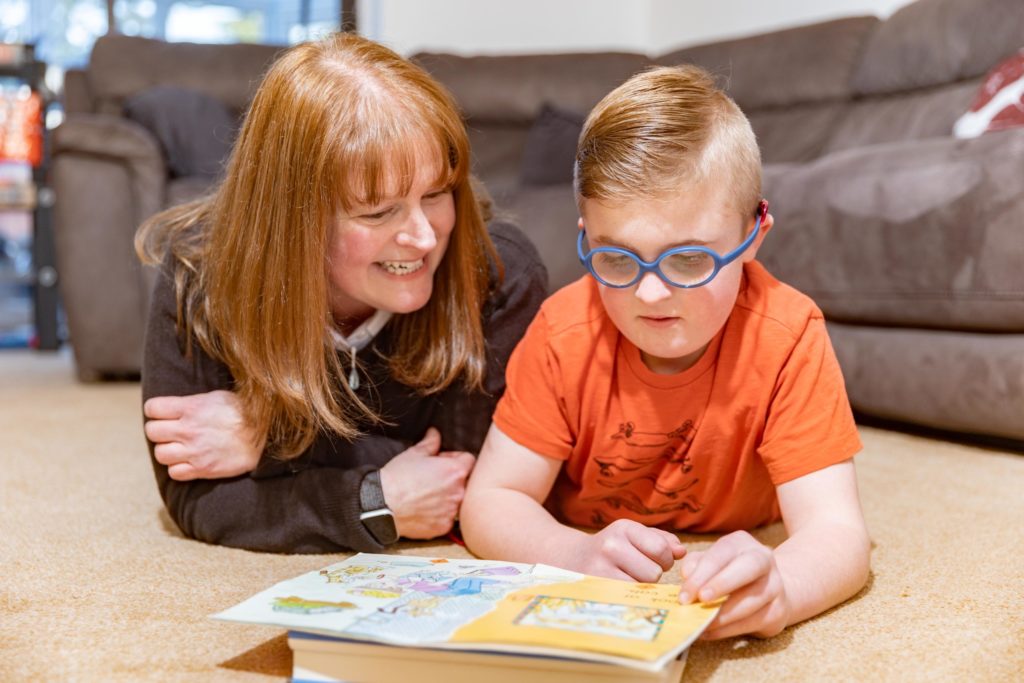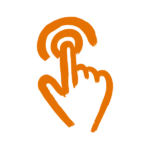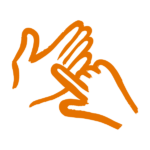Lipreading
This page explains what lipreading is, how to learn lipreading and top tips for communicating with someone who lipreads.
What is lipreading?
Lipreading is being able to recognise a person’s lip shapes, how they use their teeth and tongue, as well as understanding their gestures and facial expressions when speaking.
This helps to understand what’s being said. Lipreading enables people with hearing loss to be more involved in conversation.
How Sense can help
We offer free and impartial information about living with complex disabilities, including deafblindness.
Get in touch by phone, email, post or through a BSL interpreter.
Who uses lipreading?
Lipreading is used by many people with hearing loss to understand other people’s speech. But we all lipread to some extent.
Even if you use hearing aids, you won’t always follow everything that people are saying. That’s when lipreading can help, whether you’ve had hearing loss for years or are newly diagnosed.
It can help you stay connected to your family, friends and loved ones, and the world in general. It can help with your personal relationships, social life, workplace and career opportunities.
Before you read on…
- You can communicate using a mix of different ways. (We all do!)
- At Sense, we use whatever combination of speech, touch, sign or visual language works best.
- It’s never too late to start.
- Have a go and don’t worry about getting it wrong.
How to learn lipreading
Lipreading classes are the best way to learn. If you go to a lipreading class run by a qualified teacher, you’ll:
- Learn more quickly.
- Feel more confident about communicating with others.
- Learn more about managing your hearing loss.
- Feel more independent because you won’t need to rely on others to follow conversations.
Lipreading classes are informal, friendly and relaxed. You can go at your own pace.
In the classes, you’ll learn:
- To identify the different shapes that sounds make on the lips.
- How to get the gist of what people say, so you can join in conversations.
Most lipreading classes also cover other skills that support lipreading and help you to manage your hearing loss effectively, for example:
- Where best to put yourself in a group so that you can lipread everyone.
- How to be more confident about asking people to repeat themselves or turn to face you.
Classes will also probably include:
- Group discussions.
- Looking at equipment and organisations that can help with hearing loss.
How to find a lipreading class
To find your nearest lipreading class, visit the website of the Association of Teachers of Lipreading to Adults (ATLA).
Stay in touch

Get updates about our vital work, including volunteering, making a donation or supporting Sense campaigns.
Free online lipreading classes
If you can’t join a lipreading class, the website Lipreading Practice has lots of information about lipreading and video lessons to help you develop and practise your lipreading skills.
Keep practising
Whether you join a local class, or use online classes, it’s important to keep practising. Use muted movies and TV, your reflection in a mirror and in social situations.
ATLA has also produced a DVD, ‘Look Hear: Introduction to Lipreading’, for practice at home. To find out more, email: [email protected]
Top tips for lipreading
If you lipread:
- Before you start talking with someone, tell them that you lipread.
- Find somewhere to speak with good lighting – not too dim and not too glaring.
- Sit or stand at the same level as the person you’re speaking with.
- Get yourself in a good position where you can clearly see the lips, facial expressions and gestures of the person you’re speaking with.
- Ask the person to face the light, with their head up, looking directly at you.
- Before the conversation starts, make sure you both know what you are going to talk about.
- It’s OK to ask someone to repeat what they said, or to say it differently, if you didn’t catch it first time.
- Lipreading works best for speaking with one person or a small group.
- Take plenty of breaks. Lipreading can be tiring.
If you’re speaking with someone who lipreads:
- Sit or stand at the same level as the person who lipreads.
- Face the light, with your head up, looking directly at the person who lipreads.
- Make sure the person can see your face – don’t smoke, eat or cover your mouth with your hand.
- Before the conversation starts, make sure you both know what you are going to talk about.
- Speak clearly and talk a little slower, but not too slowly.
- Use your normal lip movements – don’t exaggerate them.
- Use your normal facial expressions and gestures to support what you’re saying.
- Be ready, if asked, to repeat what you’ve said or to try saying it in a different way.
- Use plain language, be direct and get to the point.
- It’s OK to check with the person that they’re following what you’re saying.
Other types of communication
These are the main ways of communicating that we use:
-

Using touch
- Braille uses raised dots to touch.
- Deafblind Manual spells words on to your hand.
- Block alphabet spells letters on to your hand.
- Moon uses raised lines, curves and dots to touch.
- Tadoma uses lipreading by touch.
- Hand-under-hand signing using touch.
-

Using signs
- Sign language.
- Makaton, a simpler version of sign language.
- Visual frame signing for people with reduced vision.
- Objects of reference
-

Using speech
-

Also
- Non-formal communication without speaking, writing or signing.
- Intensive interaction treating everything as communication.
This content was last reviewed in April 2023. We’ll review it again in 2025.
